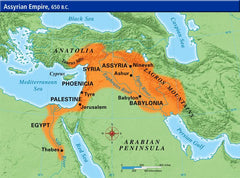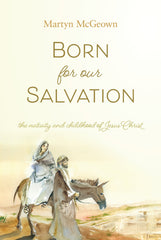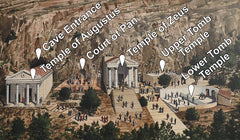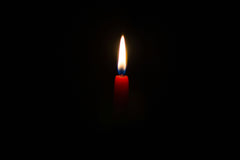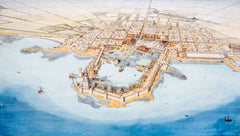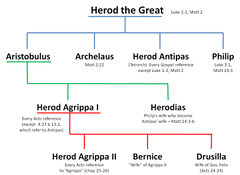Your cart is empty now.

The Sesquicentennial of the Afscheiding

This editorial was written by Homer C. Hoeksema in the February 1, 1984 issue of the Standard Bearer.
____________
This year [1984] marks the sesquicentennial, or one hundred fiftieth anniversary, of the Afscheiding, the Secession of 1834, a secession from the Hervormde Kerk (the so-called State Church) of the Netherlands. Specifically the date of that anniversary is October 14, 1834.
I do not know whether among our churches there will be any formal observance of this anniversary; thus far I have heard of no plans for such a celebration. But whether there shall be such a formal celebration or not, this is something which should not pass by unnoticed. The Standard Bearer, therefore, will make a contribution to the end that we may remember with thankfulness and rededication this momentous event.
What was so momentous about this event? Why should we remember it?
The answer lies in the fact that we as Protestant Reformed people and churches have our roots in the Secession of 1834. If it had not been for that Secession, we would not be here and would not be what we are, a communion of Reformed churches and Reformed people in the United States and Canada.
This is true, first of all, from a purely historical point of view. We as Protestant Reformed churches and people have our origin in the Christian Reformed Church. In turn, the Christian Reformed Church had its origin in the churches of the Secession of 1834. The colonists who came with Van Raalte to what is now Holland, Michigan in 1847 were people of the Afscheiding; and the Rev. Van Raalte himself was one of the leaders of the Afscheiding movement in the Netherlands prior to his coming to this country. For a time, perhaps you will remember, the colonists were connected with the Reformed Church in America (RCA); but in 1857 many of them defected from the RCA to begin what is now the Christian Reformed Church. And there can be no question but that the Christian Reformed Church constituted the true continuation of the churches of the Secession in this country.
Later, of course, there was a further separation in the Netherlands which is called the Doleantie. This took place in 1886, especially under the leadership of Dr. Abraham Kuyper. And in 1892 the two groups (that of the Secession of ‘34 and that of the Doleantie of ‘86) came together to form the Gereformeerde Kerken (GKN). And as the immigration from the Netherlands continued into the early 1900s, there were many of our ancestors who came from the GKN and who could trace their roots to either the Secession of 1834 or the Doleantie of 1886. And there are also those who can trace their origin to the segment of the 1834 churches which did not go along with the union of 1892 and who are still today known as the Christian Reformed Churches of the Netherlands.
Nevertheless, our historical roots are primarily in the Secession of 1834. Hence, from that point of view this sesquicentennial is significant.
But even more, in the second place, our roots are in the Secession of 1834 as far as the truth and as far as our confession is concerned. I am well aware of the fact that there have been other influences; and I refer to the peculiar emphasis and contribution of the Doleantie and of Abraham Kuyper and others. I am also aware of the fact that in the movement of the Secession of 1834 there was from time to time considerable "strange fire on the altar." In many respects, indeed, the formation and the survival of what came eventually to be the Gereformeerde Kerken was a wonder. Nevertheless, as far as the mainstream of the Secession of 1834 is concerned, it was a reformation! It constituted a return to the Reformed faith as it was enunciated by the Great Synod of Dordrecht in 1618–‘19; and at the same time it constituted an advance and development in the line of Dordt. And since we have our roots in 1834, it follows that we would not be here as Reformed people and churches and would not be what we are as far as the confession of the truth is concerned, were it not for that Secession and the reformation involved in it.
From this point of view, therefore, the sesquicentennial of the Afscheiding is even more important, that is, provided that our observance of it is more than the empty observance of a "history buff" and provided it does not constitute a building of the graves of the prophets.
What happened on October 14, 1834?
I cannot now review all the history that preceded that momentous occasion. The actual event of the Secession was, of course, not an isolated event; but it was the climax of a long process of degeneration and decline and of a warfare for the preservation of the truth which really began not long after the Synod of Dordrecht in 1618–‘19. Nevertheless, the actual break, the actual secession, the actual beginning or reformation took place on the date referred to.
The site is the little village of Ulrum, in the province of Groningen. On the evening of October 14 there is a gathering at the home of widow Hulshoff, a gathering of 67 members of the Hervormde Kerk of Ulrum, together with the members of the consistory and their pastor, the Rev. Hendrik de Cock. With few exceptions, the entire congregation is represented at this gathering.
They have reached a decisive moment. They stand at the crossroads.
This gathering is, in the eyes of the duly constituted authorities of the church of that day—and various "boards" had replaced the assemblies stipulated by the Church Order of Dordt—a gathering of rebels. Days of tension and battle had preceded the evening's gathering. Struggle and upheaval and unrest and much prayer had been involved in the preparation of this meeting. For the congregation had lived along with their pastor in the battle which he fought for the Reformed truth over against the ungodly ecclesiastical boards. They had lived along with him, too, in the persecution which he had to endure and in the reproach which was his portion for the sake of truth and justice. One can read on the faces of those gathered that this is a decisive moment, a turning point. They expect on this evening to take a decisive step. Not lightly will they take this step; the seriousness of the moment can be read on all their faces.
Repeatedly their pastor had been suspended. For a considerable time already he had not been permitted to minister the Word from his own pulpit. Finally he had been put out of office. To the very end he had walked the way of appeal. Patiently—too patiently in the opinion of many—he had been subject to the sentences of the ecclesiastical boards. But he had neither desired nor sought separation; on the contrary, he had done all in his power to prevent it. Now, however, both pastor and consistory had reached a decision. They were determined. Those who were gathered in widow Hulshoff's home were glad that the moment of decision had arrived, and they eagerly awaited word of it and were prepared to participate in it.
Pastor de Cock briefly addresses the gathering, pointing them to the seriousness of the moment and of the step they were contemplating. Then they all kneel in prayer to commit their cause to the Lord and to beseech him for grace that they may make their decision in the consciousness of his favor. For their help is in the name of the God of Jacob.
It was only a little band!
They did not belong to the noble and the wise and the rich of this world. They did not belong to those who counted for something in this world. But "God has chosen the foolish things of the world to confound the wise; and God hath chosen the weak things of the world to confound the things which are mighty; and base things of the world, and things which are despised, hath God chosen, yea, and things which are not, to bring to nought things that are" [1 Cor. 1:27].
It was by this little flock of small and despised folk that a step was taken and a decision reached which would prove to be of tremendous historical significance for the Reformed Churches—in fact, for Zion of all ages, for eternity.
For at this meeting this little band adopted and signed the "Act of Secession or Return (Acte van Afscheiding of Wederkeering)."
Later we shall reproduce this "Act of Secession or Return" in full in translation. For it is an historic document. For the present we call attention to the following:
1) This document states that this small and despised group of Reformed believers at Ulrum were separating with finality from the Nederlandse Hervormde Kerk.
2) It speaks in clear and decisive language of the motive of the Secession. The cause lay in the corruption of the State Church, in the degeneration of doctrine, in the profaning of the sacraments, and in the horrible neglect of discipline.
3) It rejects all that the ecclesiastical boards had done to their pastor, Hendrik de Cock, and calls his suspension and deposition from office highly unjust and ungodly.
4) It declares that recent history has made it more than plain that the State Church is not the true, but the false church.
5) It declares that therefore, by virtue of the office of all believers, Article 28, they separate themselves from those who are not the Church, and therefore no longer desire fellowship with the Netherlands Reformed Church until such a time that the latter returns to the true service of the Lord. At the same time it declares a willingness to exercise communion with all true Reformed members and to unite with every gathering that is based on God's infallible Word, wherever God has united such a gathering. And it declares that they in all things hold to God's holy Word and to the Formulas of Unity, in all things based on that Word, namely, the Confession of Faith, the Heidelberg Catechism, and the Canons of Dordrecht.
In this "Act of Secession or Return," therefore, is expressed the true character of the Secession of 1834.
And when we study that true character of the Secession, we discover that it had the marks of genuine reformation. The Secession was not sectarian. It was true reformation!
________________
To read more on this subject, read 1834: Hendrick de Cock's Return to the True Church.
The content of the article above is the sole responsibility of the article author. This article does not necessarily reflect the opinions and beliefs of the Reformed Free Publishing staff or Association, and the article author does not speak for the RFPA.

Donate
Your contributions make it possible for us to reach Christians in more markets and more lands around the world than ever before.
Select Frequency
Enter Amount


